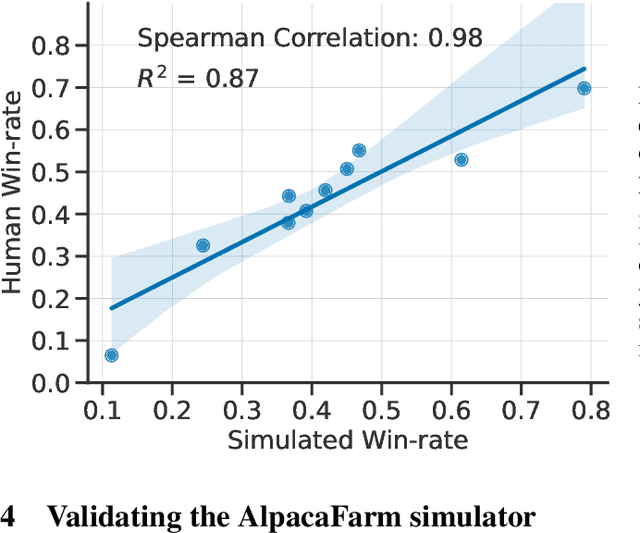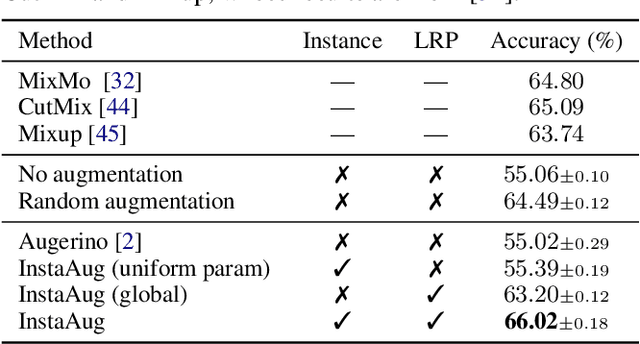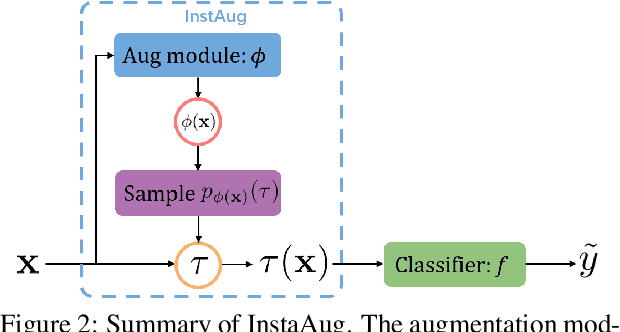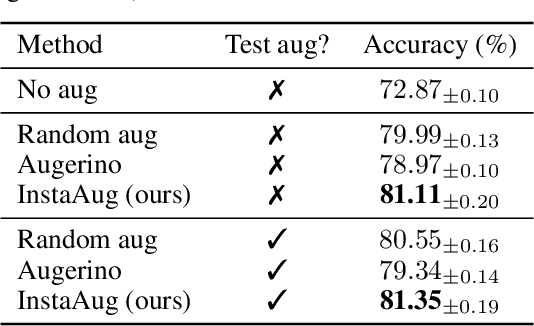Yann Dubois
OpenAI o1 System Card
Dec 21, 2024



Abstract:The o1 model series is trained with large-scale reinforcement learning to reason using chain of thought. These advanced reasoning capabilities provide new avenues for improving the safety and robustness of our models. In particular, our models can reason about our safety policies in context when responding to potentially unsafe prompts, through deliberative alignment. This leads to state-of-the-art performance on certain benchmarks for risks such as generating illicit advice, choosing stereotyped responses, and succumbing to known jailbreaks. Training models to incorporate a chain of thought before answering has the potential to unlock substantial benefits, while also increasing potential risks that stem from heightened intelligence. Our results underscore the need for building robust alignment methods, extensively stress-testing their efficacy, and maintaining meticulous risk management protocols. This report outlines the safety work carried out for the OpenAI o1 and OpenAI o1-mini models, including safety evaluations, external red teaming, and Preparedness Framework evaluations.
Apollo: An Exploration of Video Understanding in Large Multimodal Models
Dec 13, 2024



Abstract:Despite the rapid integration of video perception capabilities into Large Multimodal Models (LMMs), the underlying mechanisms driving their video understanding remain poorly understood. Consequently, many design decisions in this domain are made without proper justification or analysis. The high computational cost of training and evaluating such models, coupled with limited open research, hinders the development of video-LMMs. To address this, we present a comprehensive study that helps uncover what effectively drives video understanding in LMMs. We begin by critically examining the primary contributors to the high computational requirements associated with video-LMM research and discover Scaling Consistency, wherein design and training decisions made on smaller models and datasets (up to a critical size) effectively transfer to larger models. Leveraging these insights, we explored many video-specific aspects of video-LMMs, including video sampling, architectures, data composition, training schedules, and more. For example, we demonstrated that fps sampling during training is vastly preferable to uniform frame sampling and which vision encoders are the best for video representation. Guided by these findings, we introduce Apollo, a state-of-the-art family of LMMs that achieve superior performance across different model sizes. Our models can perceive hour-long videos efficiently, with Apollo-3B outperforming most existing $7$B models with an impressive 55.1 on LongVideoBench. Apollo-7B is state-of-the-art compared to 7B LMMs with a 70.9 on MLVU, and 63.3 on Video-MME.
Learning to (Learn at Test Time): RNNs with Expressive Hidden States
Jul 05, 2024Abstract:Self-attention performs well in long context but has quadratic complexity. Existing RNN layers have linear complexity, but their performance in long context is limited by the expressive power of their hidden state. We propose a new class of sequence modeling layers with linear complexity and an expressive hidden state. The key idea is to make the hidden state a machine learning model itself, and the update rule a step of self-supervised learning. Since the hidden state is updated by training even on test sequences, our layers are called Test-Time Training (TTT) layers. We consider two instantiations: TTT-Linear and TTT-MLP, whose hidden state is a linear model and a two-layer MLP respectively. We evaluate our instantiations at the scale of 125M to 1.3B parameters, comparing with a strong Transformer and Mamba, a modern RNN. Both TTT-Linear and TTT-MLP match or exceed the baselines. Similar to Transformer, they can keep reducing perplexity by conditioning on more tokens, while Mamba cannot after 16k context. With preliminary systems optimization, TTT-Linear is already faster than Transformer at 8k context and matches Mamba in wall-clock time. TTT-MLP still faces challenges in memory I/O, but shows larger potential in long context, pointing to a promising direction for future research.
Length-Controlled AlpacaEval: A Simple Way to Debias Automatic Evaluators
Apr 06, 2024



Abstract:LLM-based auto-annotators have become a key component of the LLM development process due to their cost-effectiveness and scalability compared to human-based evaluation. However, these auto-annotators can introduce complex biases that are hard to remove. Even simple, known confounders such as preference for longer outputs remain in existing automated evaluation metrics. We propose a simple regression analysis approach for controlling biases in auto-evaluations. As a real case study, we focus on reducing the length bias of AlpacaEval, a fast and affordable benchmark for chat LLMs that uses LLMs to estimate response quality. Despite being highly correlated with human preferences, AlpacaEval is known to favor models that generate longer outputs. We introduce a length-controlled AlpacaEval that aims to answer the counterfactual question: "What would the preference be if the model's and baseline's output had the same length?". To achieve this, we first fit a generalized linear model to predict the biased output of interest (auto-annotator preferences) based on the mediators we want to control for (length difference) and other relevant features. We then obtain length-controlled preferences by predicting preferences while conditioning the GLM with a zero difference in lengths. Length-controlling not only improves the robustness of the metric to manipulations in model verbosity, we also find that it increases the Spearman correlation with LMSYS' Chatbot Arena from 0.94 to 0.98. We release the code and leaderboard at https://tatsu-lab.github.io/alpaca_eval/ .
Identifying the Risks of LM Agents with an LM-Emulated Sandbox
Sep 25, 2023Abstract:Recent advances in Language Model (LM) agents and tool use, exemplified by applications like ChatGPT Plugins, enable a rich set of capabilities but also amplify potential risks - such as leaking private data or causing financial losses. Identifying these risks is labor-intensive, necessitating implementing the tools, manually setting up the environment for each test scenario, and finding risky cases. As tools and agents become more complex, the high cost of testing these agents will make it increasingly difficult to find high-stakes, long-tailed risks. To address these challenges, we introduce ToolEmu: a framework that uses an LM to emulate tool execution and enables the testing of LM agents against a diverse range of tools and scenarios, without manual instantiation. Alongside the emulator, we develop an LM-based automatic safety evaluator that examines agent failures and quantifies associated risks. We test both the tool emulator and evaluator through human evaluation and find that 68.8% of failures identified with ToolEmu would be valid real-world agent failures. Using our curated initial benchmark consisting of 36 high-stakes tools and 144 test cases, we provide a quantitative risk analysis of current LM agents and identify numerous failures with potentially severe outcomes. Notably, even the safest LM agent exhibits such failures 23.9% of the time according to our evaluator, underscoring the need to develop safer LM agents for real-world deployment.
AlpacaFarm: A Simulation Framework for Methods that Learn from Human Feedback
May 22, 2023



Abstract:Large language models (LLMs) such as ChatGPT have seen widespread adoption due to their ability to follow user instructions well. Developing these LLMs involves a complex yet poorly understood workflow requiring training with human feedback. Replicating and understanding this instruction-following process faces three major challenges: the high cost of data collection, the lack of trustworthy evaluation, and the absence of reference method implementations. We address these challenges with AlpacaFarm, a simulator that enables research and development for learning from feedback at a low cost. First, we design LLM prompts to simulate human feedback that are 45x cheaper than crowdworkers and display high agreement with humans. Second, we propose an automatic evaluation and validate it against human instructions obtained on real-world interactions. Third, we contribute reference implementations for several methods (PPO, best-of-n, expert iteration, and more) that learn from pairwise feedback. Finally, as an end-to-end validation of AlpacaFarm, we train and evaluate eleven models on 10k pairs of real human feedback and show that rankings of models trained in AlpacaFarm match rankings of models trained on human data. As a demonstration of the research possible in AlpacaFarm, we find that methods that use a reward model can substantially improve over supervised fine-tuning and that our reference PPO implementation leads to a +10% improvement in win-rate against Davinci003. We release all components of AlpacaFarm at https://github.com/tatsu-lab/alpaca_farm.
Evaluating Self-Supervised Learning via Risk Decomposition
Feb 06, 2023Abstract:Self-supervised learning (SSL) pipelines differ in many design choices such as the architecture, augmentations, or pretraining data. Yet SSL is typically evaluated using a single metric: linear probing on ImageNet. This does not provide much insight into why or when a model is better, now how to improve it. To address this, we propose an SSL risk decomposition, which generalizes the classical supervised approximation-estimation decomposition by considering errors arising from the representation learning step. Our decomposition consists of four error components: approximation, representation usability, probe generalization, and encoder generalization. We provide efficient estimators for each component and use them to analyze the effect of 30 design choices on 169 SSL vision models evaluated on ImageNet. Our analysis gives valuable insights for designing and using SSL models. For example, it highlights the main sources of error and shows how to improve SSL in specific settings (full- vs few-shot) by trading off error components. All results and pretrained models are at https://github.com/YannDubs/SSL-Risk-Decomposition.
Improving Self-Supervised Learning by Characterizing Idealized Representations
Sep 13, 2022



Abstract:Despite the empirical successes of self-supervised learning (SSL) methods, it is unclear what characteristics of their representations lead to high downstream accuracies. In this work, we characterize properties that SSL representations should ideally satisfy. Specifically, we prove necessary and sufficient conditions such that for any task invariant to given data augmentations, desired probes (e.g., linear or MLP) trained on that representation attain perfect accuracy. These requirements lead to a unifying conceptual framework for improving existing SSL methods and deriving new ones. For contrastive learning, our framework prescribes simple but significant improvements to previous methods such as using asymmetric projection heads. For non-contrastive learning, we use our framework to derive a simple and novel objective. Our resulting SSL algorithms outperform baselines on standard benchmarks, including SwAV+multicrops on linear probing of ImageNet.
Is a Caption Worth a Thousand Images? A Controlled Study for Representation Learning
Jul 15, 2022



Abstract:The development of CLIP [Radford et al., 2021] has sparked a debate on whether language supervision can result in vision models with more transferable representations than traditional image-only methods. Our work studies this question through a carefully controlled comparison of two approaches in terms of their ability to learn representations that generalize to downstream classification tasks. We find that when the pre-training dataset meets certain criteria -- it is sufficiently large and contains descriptive captions with low variability -- image-only methods do not match CLIP's transfer performance, even when they are trained with more image data. However, contrary to what one might expect, there are practical settings in which these criteria are not met, wherein added supervision through captions is actually detrimental. Motivated by our findings, we devise simple prescriptions to enable CLIP to better leverage the language information present in existing pre-training datasets.
Learning Instance-Specific Data Augmentations
May 31, 2022



Abstract:Existing data augmentation methods typically assume independence between transformations and inputs: they use the same transformation distribution for all input instances. We explain why this can be problematic and propose InstaAug, a method for automatically learning input-specific augmentations from data. This is achieved by introducing an augmentation module that maps an input to a distribution over transformations. This is simultaneously trained alongside the base model in a fully end-to-end manner using only the training data. We empirically demonstrate that InstaAug learns meaningful augmentations for a wide range of transformation classes, which in turn provides better performance on supervised and self-supervised tasks compared with augmentations that assume input--transformation independence.
 Add to Chrome
Add to Chrome Add to Firefox
Add to Firefox Add to Edge
Add to Edge